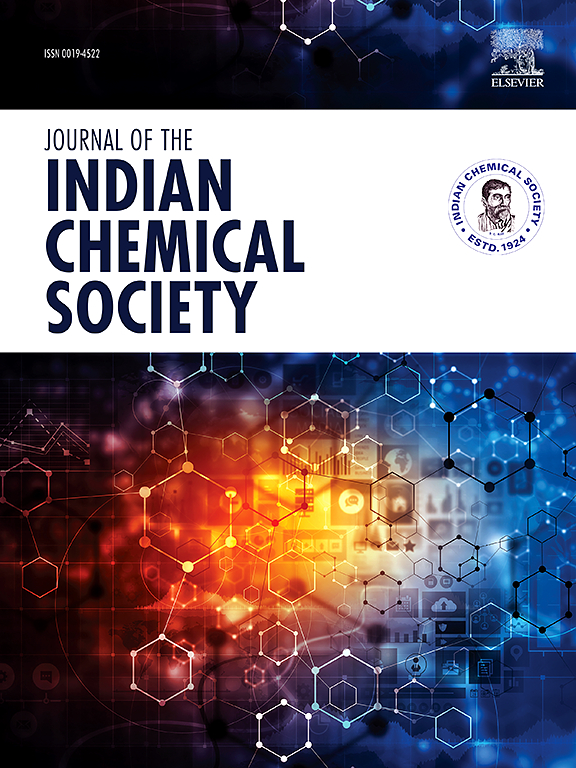新型Cu/Ni-BTC双金属有机骨架对水中亚甲基蓝的强化修复
IF 3.2
4区 化学
Q2 CHEMISTRY, MULTIDISCIPLINARY
引用次数: 0
摘要
采用水热法制备Cu/Ni-BTC双金属有机骨架,并将其用于废水中亚甲基蓝(MB)的脱除。通过x射线衍射(XRD)、傅里叶变换红外光谱(FTIR)、扫描电镜(SEM)、能量色散x射线分析(EDX)、热重分析(TGA)和零电荷点(pHPZC)等技术对制备的Cu/Ni-BTC进行了分析。考察了pH、反应时间、Cu/Ni-BTC的投加量、初始染料浓度和温度等参数对反应效果的影响。结果表明,随着Cu/Ni-BTC时间和用量的增加,其吸附和光催化降解性能均有所提高。吸附动力学数据符合拟二级,平衡等温线数据符合Langmuir模型,最高去除率为392 mg g−1。此外,颗粒内扩散表明吸附过程遵循孔隙和膜扩散现象。ΔG°、ΔH°和ΔS°等热力学因子证实了吸附是放热自发的。此外,光降解过程中的活性物质为•O2-、•OH和h+。解吸实验表明,吸附剂的有效利用率可达5次循环。制备的MOF脱除效率高,可作为染料脱除的高效材料。本文章由计算机程序翻译,如有差异,请以英文原文为准。

Novel bimetallic organic frameworks of Cu/Ni-BTC for enhanced remediation of methylene blue from aqueous medium
Cu/Ni-BTC bimetal-organic frameworks was prepared hydrothermally and used for methylene blue (MB) removal from wastewater. Prepared Cu/Ni-BTC was analyzed through different techniques including X-ray diffraction (XRD), Fourier transform infrared spectroscopy (FTIR), scanning electron microscopy (SEM), Energy dispersive X-ray analysis (EDX), Thermogravimetric analysis (TGA) and point of zero charge (pHPZC). Different parameters such as pH, reaction time, dose of Cu/Ni-BTC, initial dye concentration, and temperature were studied. It was examined that increasing time and dosage of Cu/Ni-BTC, adsorption and photocatalytic degradation also increased. The interpretation of kinetic data of sorption is in agreement with pseudo second order while equilibrium isotherm data agreed well with Langmuir model and highest removal capacity was 392 mg g−1. Moreover, intraparticle diffusion recommended that adsorption process follow both pore and film diffusion phenomenon. Thermodynamic factors such as ΔG°, ΔH° and ΔS° confirmed that sorption was exothermic and spontaneous in nature. Furthermore, active species in photo-degradation process were •O2-, •OH and h+. Desorption study suggested that adsorbent can be efficiently used up to five cycles. Because of highly removal efficiency, prepared MOF can be used as a proficient material for dyes removal.
求助全文
通过发布文献求助,成功后即可免费获取论文全文。
去求助
来源期刊
CiteScore
3.50
自引率
7.70%
发文量
492
审稿时长
3-8 weeks
期刊介绍:
The Journal of the Indian Chemical Society publishes original, fundamental, theorical, experimental research work of highest quality in all areas of chemistry, biochemistry, medicinal chemistry, electrochemistry, agrochemistry, chemical engineering and technology, food chemistry, environmental chemistry, etc.

 求助内容:
求助内容: 应助结果提醒方式:
应助结果提醒方式:


